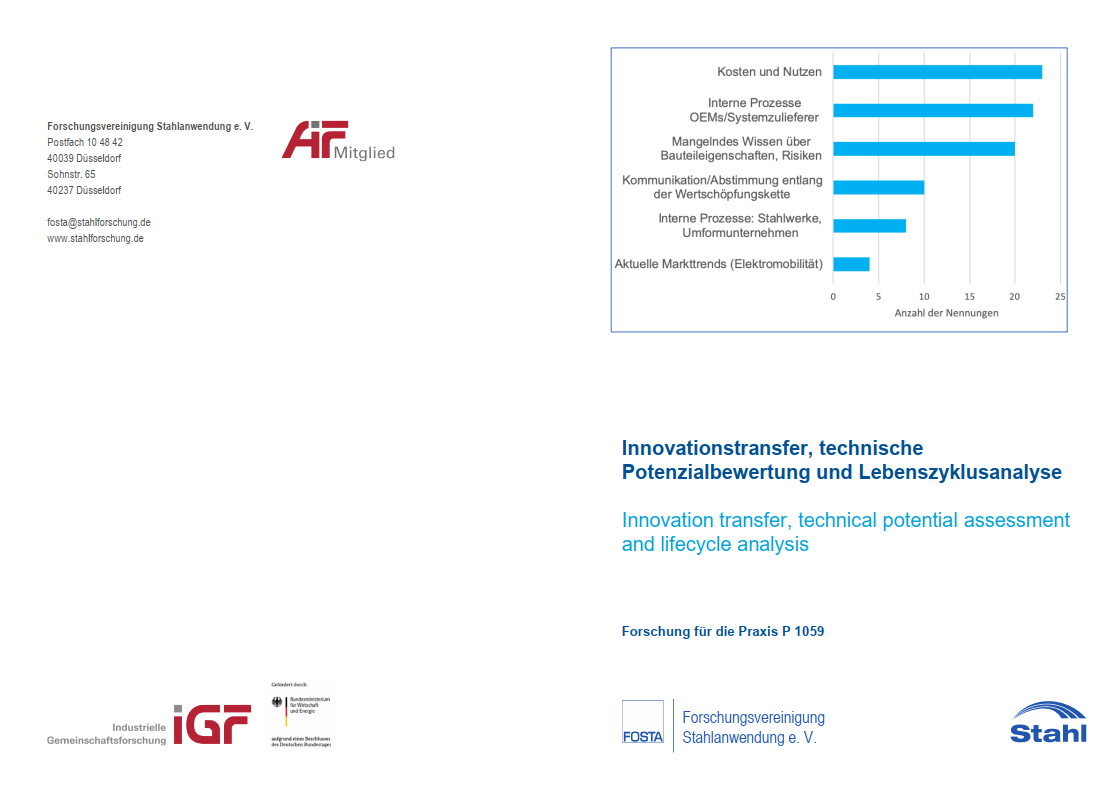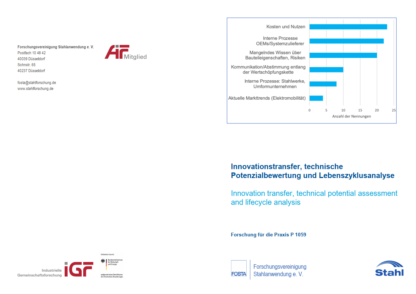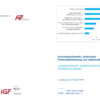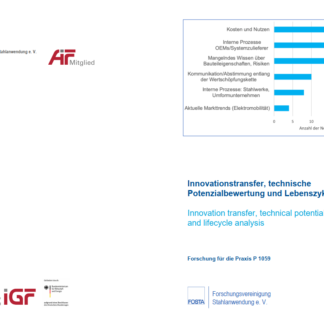Description
P 1059 – Innovation transfer, technical potential assessment and lifecycle analysis
Within the research network lightweight forging, SP5 assumes a comprehensive function by contributing aspects, which are downstream from the viewpoint of the development of the new components, e.g. the economic implementation as well as sustainability of lightweight innovations. This project focuses on an analysis of the industry level innovation system as well as the innovation barriers in the process chain, an evaluation of the potential of the primarily weight-reduced reference components, an analysis of the secondary weight saving potential and a life cycle analysis. In the project, innovation processes in the sectoral innovation system of massive lightweight forging were scrutinized. On this basis, innovation barriers were identified. One example are established routines in steel and forming companies. System suppliers and OEMs often do not possess sufficient knowledge about the possibilities of new materials and component designs. Decision-making processes in the latter stages of the value chain are sometimes quite complex. A particular important barrier is the fact that contacts between steel and forming companies on the one hand, and system suppliers and OEMs on the other, are still rather limited in scope. The activities of the industrial initiative and the research network provided important impulses for dismantling barriers to innovation and a more intensive examination of issues relating to lightweight forging. Furthermore,
the consolidation of the relationship between the stages of the value-added chain and the early involvement of forming companies in the development of new model generations represent important steps towards the removal of barriers to innovation. A positive differentiation factor for lightweight innovations can be the improvement of energy efficiency and driving safety. The potential assessment of the primarily weightreduced components focuses on efficiency (powertrain) and driving dynamics (chassis). This required the imaging of a reference vehicle in simulation models. The efficiency analysis shows a reduction in energy consumption of about 0.1 l of diesel fuel/ 100 km * 100 kg in the NEDC. In terms of driving dynamics, an assessment of the improvement of driving safety and driving comfort based on dedicated driving maneuvers. Lightweight design has a clearly positive effect on the braking distance and the double lane change (driving safety and dynamics). The analysis of the effects of secondary weight-saving potentials show that a primary weight reduction allows further, secondary potentials of approx. 30-50%. Lastly, a life cycle analysis for a gear as a selected reference component provides a holistic view of the effect of the lightweight measures. All evaluated lightweight variants of the gear have an increased relative emission intensity (Global warming potential). Due to the large relative mass potentials of the lightweight variants, however, this effect is overcompensated for all three lightweight variants. All in all, the studies within the framework of the project show that there are numerous positive effects of lightweight forging in the automotive industry. These effects are partly directly (via energy consumption and improved driving characteristics) partly indirect through closer pre-competitive cooperation along the value-added chain and increased knowledge about component characteristics as well as benefits and costs of lightweight forging in the automobile industry.
Main content only available in german language.
Published in:
February 2020
FOSTA – Research Association for Steel Application




